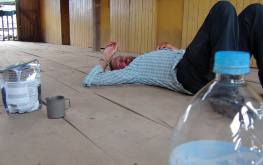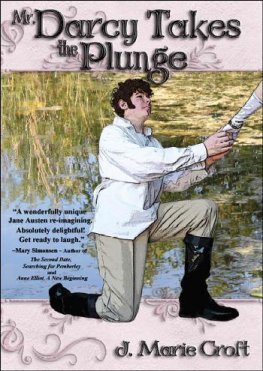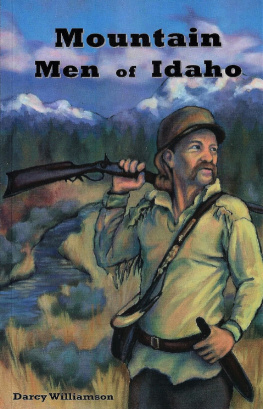Contents
Guide

AMAZON
WOMAN
FACING FEARS, CHASING DREAMS, AND A QUEST TO KAYAK
THE WORLDS LARGEST RIVER FROM SOURCE TO SEA
DARCY GAECHTER

To my parentsAnn and Bill Gaechter. To my sister, Lacey, and to Don.
Thanks for always believing in me no matter how crazy my ideas or plans are.
CONTENTS
I n this book, I call the Amazon River the worlds largest river rather than the worlds longest river. This is because there is strong debate among geographers about which river is longerthe Amazon or the Nileand I didnt want to produce a book that gets passed by because of potentially inaccurate information in the title. Measurements vary widely depending on which route is measured (river runners or map tracers can choose from literally hundreds of channels to make their way down these leviathan rivers), and which part one exits from each rivers massive delta. Many geographers believe that the Nile is longer, though not all agree, and there is much ambiguity around the subject. At the time of this writing, the History Channel had published an article claiming the Amazon was longer, while Guinness World Records tells us the Nile is longer. I like to believe the Amazon is longer, but I dont have definitive proof. The entire scientific world does, however, agree that the Amazon is the worlds largest river by volume, holding up to 20 percent of the earths fresh water, so I chose that wording.
____________
Nate Barksdale, What Is the Longest River in the World? History Channel.com, updated August 22, 2018, https://www.history.com/news/what-is-the-longest-river-in-the-world and Longest River, GuinnessWorldRecords.com, https://www.guinnessworldrecords.com/world-records/longest-river/, both accessed October 17, 2019.
John Roach, Amazon Longer than Nile River, Scientists Say, NationalGeographic.com, June 18, 2007, https://www.nationalgeographic.com/science/2007/06/amazon-longer-than-nile-river/, accessed October 17, 2019.
Rivers of the World: Worlds Longest Rivers, US Geological Survey, updated 1990, https://www.usgs.gov/special-topic/water-science-school/science/rivers-world-worlds-longest-rivers?qt-science_center_objects=0#qt-science_center_objects, accessed October 17, 2019.
Eddy: A calm spot in the river where water flows around an obstacle, such as a rock, and then reverses course to fill in the space behind it. The water in an eddy is moving upriver, but is usually relatively calm and offers a haven from the downriver moving current. Eddies are used for resting, getting out of the current, getting out of the river, and scouting. Eddies are typically the only way to stop when you are on a river.
Hydraulic/Hole: A feature in the river caused by water pouring over the top of a submerged object such as a boulder or a ledge (as opposed to around but not over the top of a rock, which would create an eddy). The water on the surface of the river reverses back on itself and flows violently back upriver. Only deep under the surface can you find water that is still flowing down the river. Holes can keep a kayaker trapped in their backwash. If you dont have the skills to escape this backwashto work your way out the edges of the holeyou will have to swim free of your kayak and let the river push you to the bottom of the river where there is downriver traveling current so you can escape. Kayakers are taught to curl up into a ball if they are swimming free of their kayak and are still caught in a hydraulic (instead of trying to swim toward the surface). Balling up will allow the river to push you down toward the bottom where you have a better chance of escaping the backwash of a hole.
Wave: A wave in the river is much like a non-breaking ocean wave. It is formed when there is an increase in gradient, when the riverbed constricts, or when the current flows over deeply submerged rocks. While waves in the ocean are moving features that eventually dissipate, river waves are stationary. The water in a river moves downstream, but the wave stays in the same spot, creating an obstacle that a kayaker can paddle around or paddle through.
Breaking wave: A wave in a river where the top is breaking and creating whitewater and backwash. This can sometimes be strong enough to surf a kayaker.
Sieve/Siphon: A place in the river where the water flows underneath a pile of rocks or logs (think of a large-scale spaghetti strainer that water can fit through but a kayaker cannot). These are very dangerous for kayakers and are to be avoided at all costs.
River right: Directions on the river are always given as though you are traveling (and facing) down the river. River right will always be the right side of the river for a downriver-traveling person.
River left: River left will always be the left side of the river for a downriver-traveling person.
Upstream: The opposite direction that the current is flowing.
Downstream: The same direction that the current is flowing.
Ferry: A maneuver used to cross a current with little or no downstream travel.
Peel out: To leave an eddy you have to paddle into the currentwhich can sometimes be a violent transitionand you peel out into the river and head downstream.
Roll: The process to right an upside-down kayak. This maneuver is tricky to learn and involves concurrent movements of the knees, hips, torso, head, and paddle.
Combat roll: The ability to roll in whitewater once youve capsized by accident. Most people learn to roll in a swimming pool or in an eddy. Translating these skills from calm water to the middle of the rapid is quite difficult and usually takes a lot of mental and physical training.
Portage: To walk around a rapid.
Boof: To launch your kayak up and over an obstacle; kind of like jumping on skis. Boofing is a good skill to have to get over holesif you can jump your kayak over a hydraulic, there is a smaller chance of getting stuck in its backwash.
Seal launch: To drop into the river (in your kayak) from a height above the water. This is most commonly used while portaging when you cannot climb back down to water level. If you can find a ledge that is not too high, you can set your boat on that ledge, get in your kayak, and free-fall into the river.
Brace: A kayaking stroke used to keep from tipping over.
CFS: Cubic feet per second. A standard measure of river volume in the United States.
CMS: Cubic meters per second. A standard measure of river volume in most of the rest of the world.
Cockpit: The opening in the deck of a kayak where the paddler enters the boat.
Spray skirt: A neoprene skirt that kayakers wear around their waist and then seal over the cockpit of their kayak to keep water out.
Swim: When a kayaker is unable to perform a combat roll, they must swim free of their kayak in order to reach the surface to get air. The term swim in general means to get out of your kayak while you are in the river. In order to swim, the kayaker must first pull off the neoprene spray skirt that is keeping them in the kayak. Its not a good thing to do, as swimming in the river is much more dangerous than kayaking down the river. Swimming might also be necessary when a kayaker is stuck in a hole they cant get out of, or if they are pinned to rocks on the bottom of the river and cant free their kayak.
River difficulty: People running whitewater typically use a scale of Class one (I) through Class six (VI) to describe the difficulty of a river or rapid, and the skills necessary to safely navigate it. The rating also takes into consideration the consequences of mistakes. A plus (+) or a minus (-) after a rating means slightly harder or easier than the designated class. Class III+ means a river is a little harder than Class III, but not hard enough to warrant a Class IV rating.















